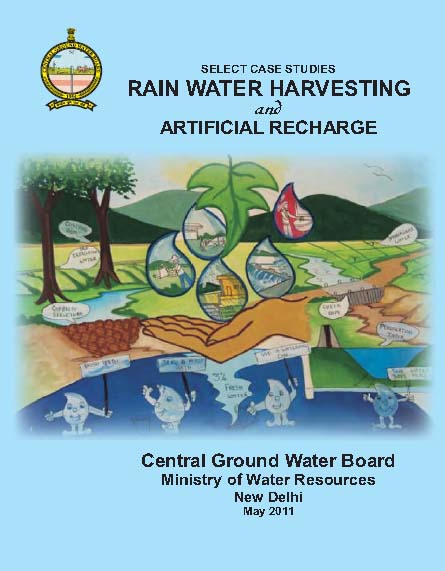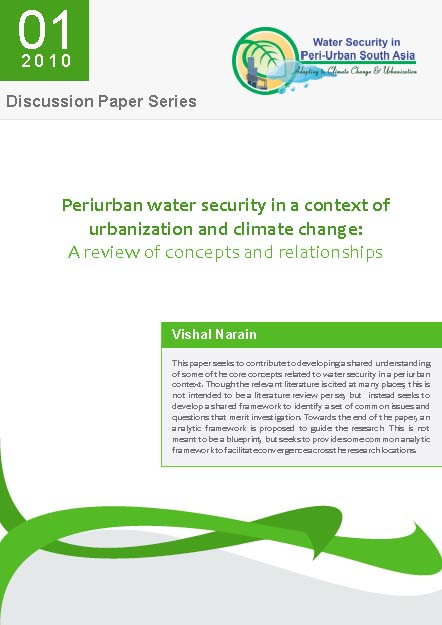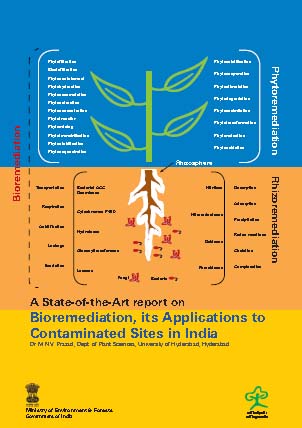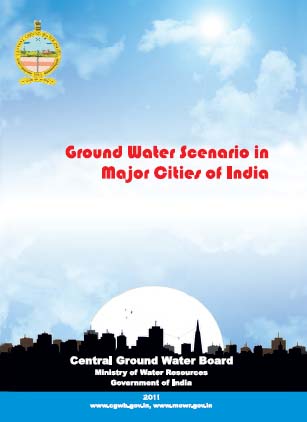India
My experiment with SRI
Posted on 18 May, 2011 06:28 PMDue to my childhood acquaintance with paddy cultivation, I used to be curious to understand global processes and methodologies around this cultivation and to do better to help my local community benefit.
Case studies on rainwater harvesting and artificial recharge – A compilation by Central Ground Water Board
Posted on 17 May, 2011 09:13 PM Groundwater caters to the demand of ever growing domestic, agricultural and industrial sector of the country and is being indiscriminately exploited by several users. On the other hand, rapid urbanization and land use changes has resulted in reduced natural infiltration or recharge of aquifers.
Groundwater caters to the demand of ever growing domestic, agricultural and industrial sector of the country and is being indiscriminately exploited by several users. On the other hand, rapid urbanization and land use changes has resulted in reduced natural infiltration or recharge of aquifers.
This has led to various problems related to quantity and quality and issues like the decline in water levels, depletion of groundwater resource and quality deterioration. There is thus an imperative need for augmenting the valuable groundwater resource. Artificial recharge and roof top rainwater harvesting is one such method that can revive this precious resource. Several traditional and scientifically proven artificial recharge and rainwater harvesting techniques have been adopted in different parts of the country. These structures have proven to be viable option for augmenting the groundwater aquifers by making use of surplus surface runoff.
Sustainable Sugarcane Initiative (SSI) produces more sugarcane with less water and chemical inputs - Videos by AgSRI
Posted on 17 May, 2011 04:38 PM
Peri-urban water security in a context of urbanization and climate change - A review of concepts and relationships by SaciWaters
Posted on 17 May, 2011 04:05 PM
It is a part of the peri-urban water security project discussion paper series that aims at having a collection of research papers relevant to the concepts and processes involved in the project that represent preliminary ideas circulated to encourage discussion and comments.
Though the relevant literature is cited at many places, this is not intended to be a literature review per se, but instead seeks to develop a shared framework to identify a set of common issues and questions that merit investigation.
The paper argues that peri-urban can be better understood in terms of its characteristics - a mix of agricultural and non-agricultural land uses, flows of goods, services and resources between villages and urban centers and a social profile that is very heterogeneous and in a state of flux. All these impact upon the local natural resource base, creating particular environmental and natural resource management problems that are often beyond the scope of urban or rural governments alone and require innovative ways of being addressed.
Varunyantra to tap skywater: A Bhagirath effort
Posted on 17 May, 2011 03:51 PM
Although there is enough water in the world, it is rarely in the right place at the right time in the right quantity and quality.
Cloud seeding for India - An effective weapon to fight drought , saysProf. Shivaji Rao
Posted on 17 May, 2011 03:51 PMThe more the water wealth of a nation the higher will be the opportunities for achieving high rates of progress in the fields of agriculture production and industrial growth that help in promoting economic wealth, employment opportunities and higher standards of living. Hence the advanced countries are constantly upgrading their water resources by harnessing not only all the ground and surface waters but also by tapping a renewable, virtually unlimited and unexploited sky water resource in the atmosphere in the form of innumerable clouds. Enlightened scientists, bureaucrats, industrialists and statesmen in about 50 countries are frequently using cloud seeding operations for over 40 years for various purposes like
Bioremediation, its applications to contaminated sites in India - A state of the art report by Ministry of Environment and Forests
Posted on 17 May, 2011 12:42 PM Bioremediation is emerging as an effective innovative technology for treatment of a wide variety of contaminants and is an invaluable tool box for wider application in the realm of environmental protection.
Bioremediation is emerging as an effective innovative technology for treatment of a wide variety of contaminants and is an invaluable tool box for wider application in the realm of environmental protection.
Bioremediation approach is currently applied to contain contaminants in soil, groundwater, surface water, and sediments including air. These technologies have become attractive alternatives to conventional clean-up technologies due to relatively low capital costs and their inherently aesthetic nature.
It includes phytoremediation (plants) and rhizoremediation (plant and microbe interaction). Rhizoremediation, which is the most evolved process of bioremediation, involves the removal of specific contaminants from contaminated sites by mutual interaction of plant roots and suitable microbial flora.
The report documents the existing knowledge for the benefit of regulators, who evaluate the quality of environment and for practitioners, who have to implement and evaluate remediation alternatives at a given contaminated site. It is expected to provide basic understanding of the bioremediation mechanisms to the reader. The technical descriptions provided in this document concentrate on the functioning mechanisms: phytosequestration, rhizodegradation, phytohydraulics, phytoextraction, phytodegradation, and phytovolatilization.
Groundwater scenario in major cities of India – A report by Central Ground Water Board
Posted on 17 May, 2011 10:35 AM It covers varying groundwater scenarios in the country including the highly developed metros, the hilly region, the coastal cities, the cities tapping unconsolidated and hard rock aquifers. The report briefly describes the administrative set up, status of water supply and demand, groundwater scenario, feasibility of rainwater harvesting and groundwater development strategy.
It covers varying groundwater scenarios in the country including the highly developed metros, the hilly region, the coastal cities, the cities tapping unconsolidated and hard rock aquifers. The report briefly describes the administrative set up, status of water supply and demand, groundwater scenario, feasibility of rainwater harvesting and groundwater development strategy.
It is an updated version of an earlier report on “Groundwater in urban environment in India” (2000). Since then, groundwater regime, urban demography and water demand have changed enormously. This report will form a scientific base for an in-depth understanding of urban groundwater system including aquifer geometry, water level behavior and groundwater quality. The possibility of artificial recharge to rejuvenate the urban aquifers has also been discussed.
Agencies monitoring groundwater level in various parts of India in 2011 A list by the Central Ground Water Board
Posted on 16 May, 2011 07:26 PM
The CGWB has been monitoring groundwater levels on a quarterly basis during January, April/ May, August and November through a network of about 15000 observation wells located all over the country. This data is used for assessment of groundwater resources and changes in the regime consequent to various development and management activities.